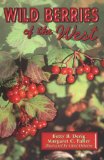After I wrote last week’s post about insects gathering nectar and pollen from a flowering wolfberry plant, I visited the plant once more.
 It looked quite different. Rather than one or two snout butterflies here and there, there were over thirty fluttering around.
It looked quite different. Rather than one or two snout butterflies here and there, there were over thirty fluttering around.
 Can you see the long snout that gives them their common name?
Can you see the long snout that gives them their common name?
The adult butterflies were only sipping nectar from the wolfberry flowers and it is not a host for them. Snouts lay their eggs on hackberry trees (Celtis sp.)
The caterpillars that hatch from the eggs are green. Butterflies and Moths of North America website has some photographs of the caterpillars. When they are done feeding, they form chrysalids that are a similar green color.
Today, the wolfberry has finished flowering. I wonder where the snout butterflies are now.

















